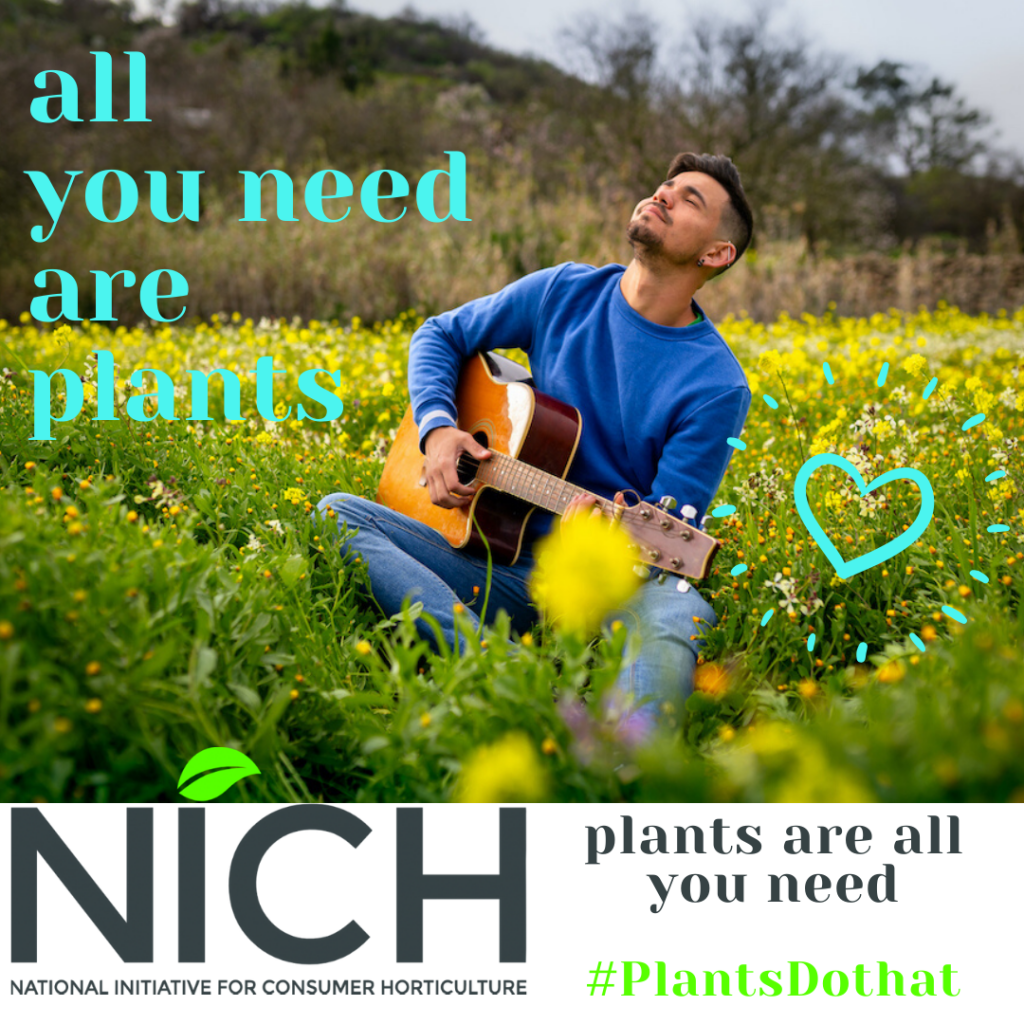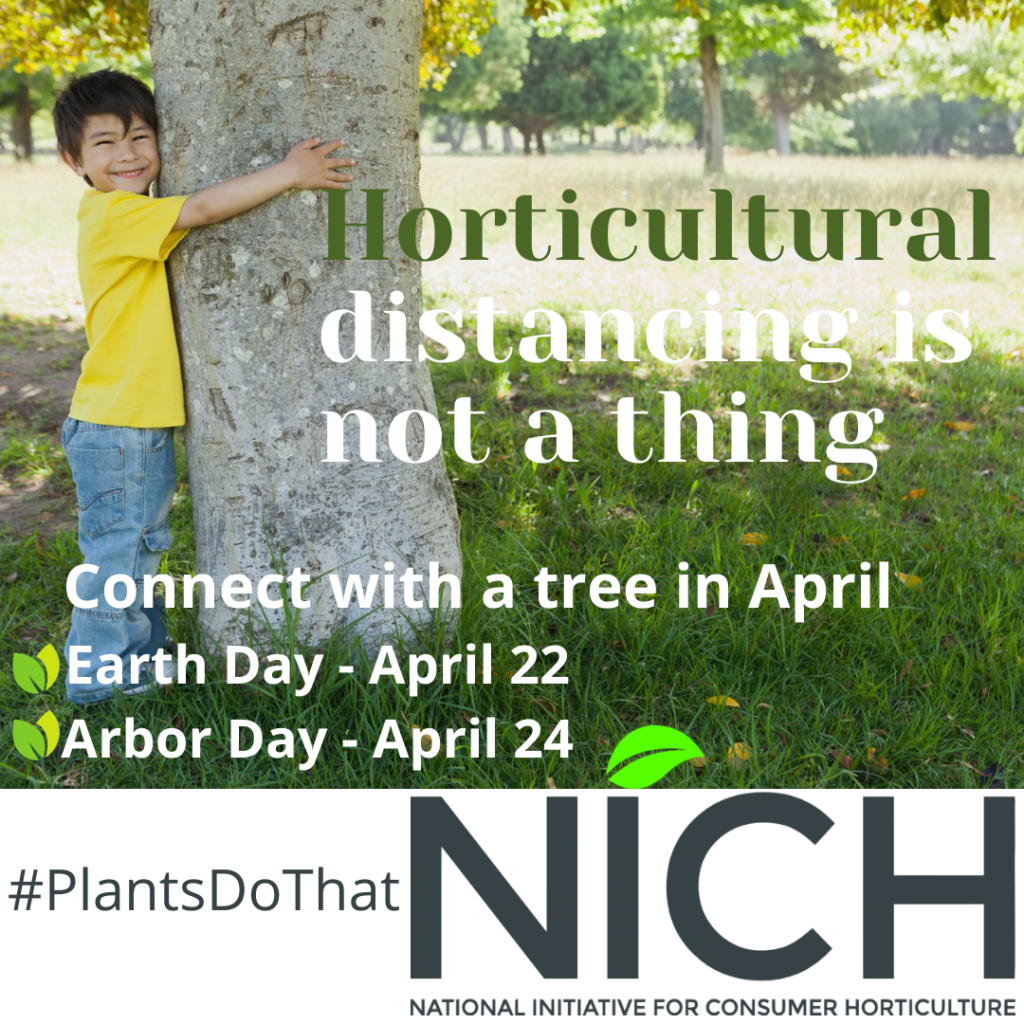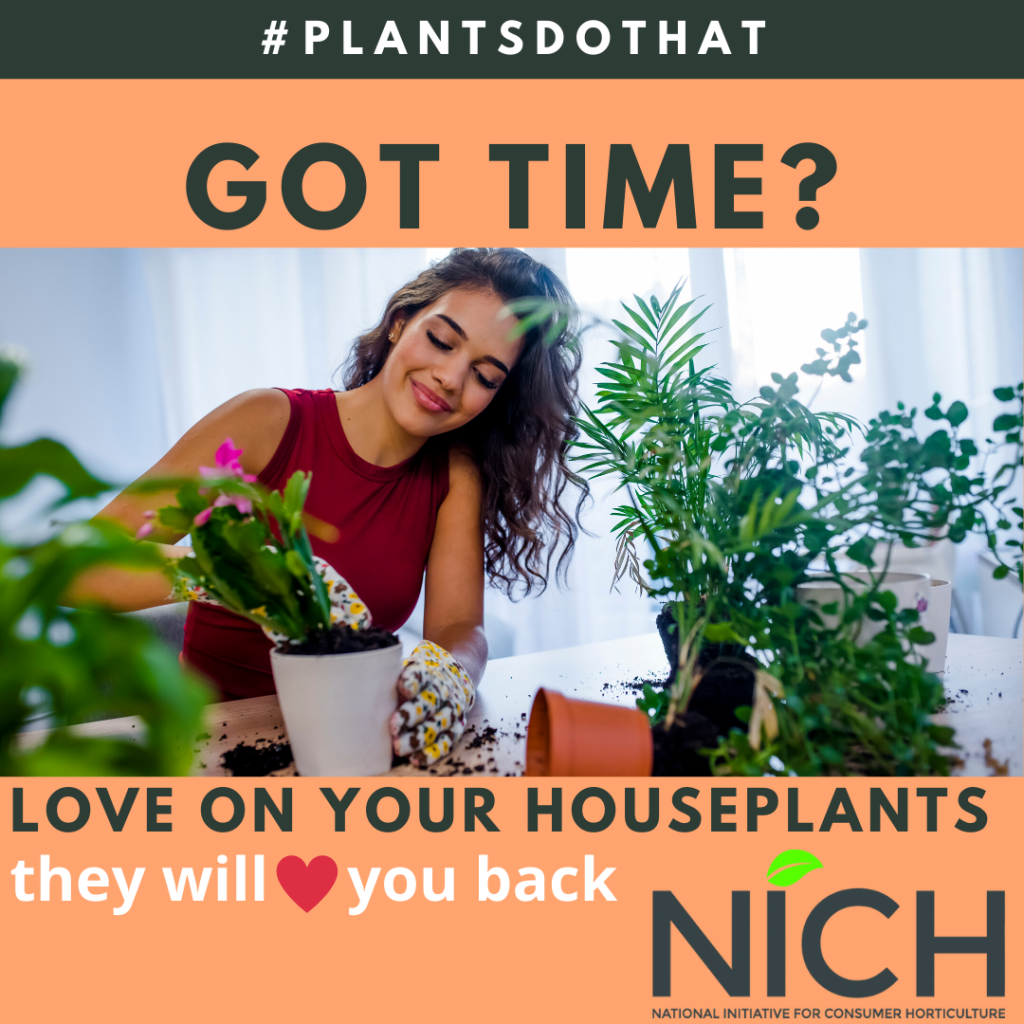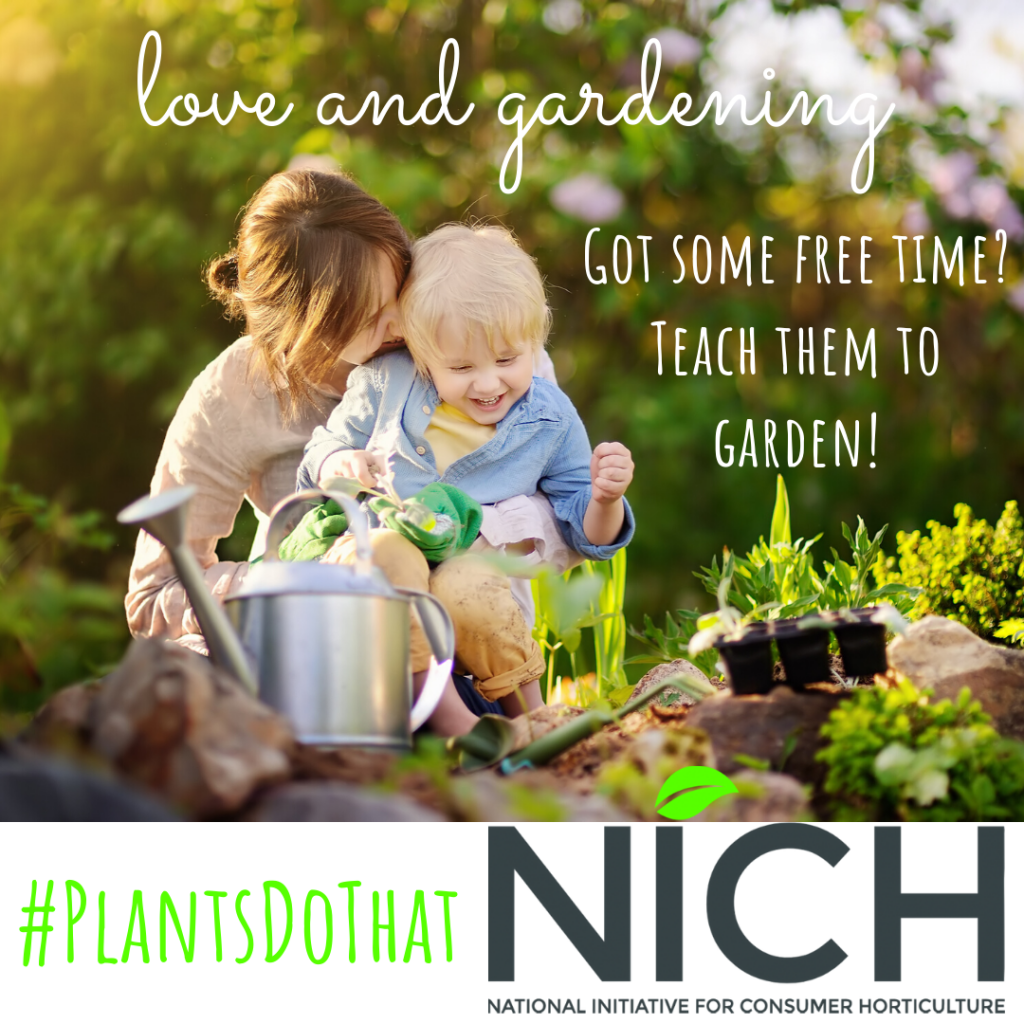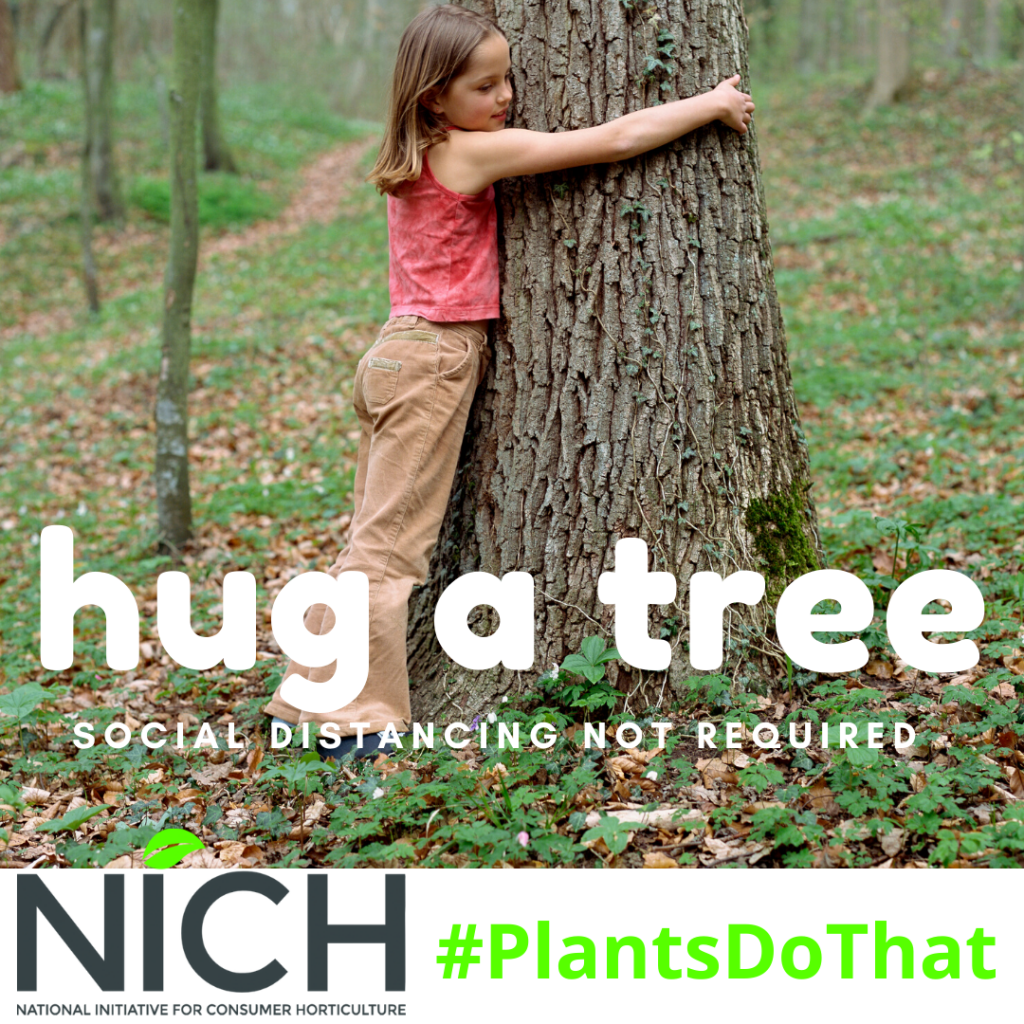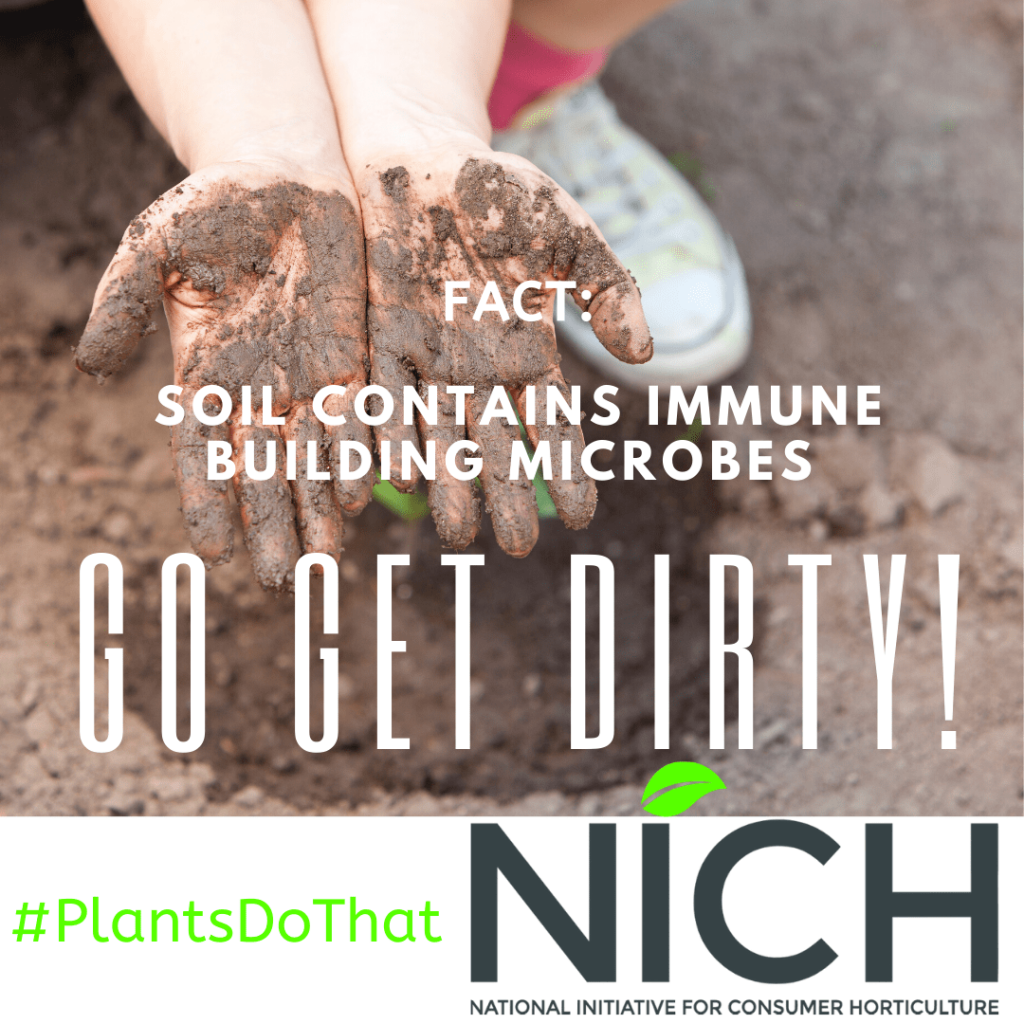“When plants are around, students are just smarter and pay more attention,”
-Dr. Charles Hall, Ellison Chair, Texas A&M University.

The shareable infographic, #PlantsDoThat Inside: Where We Learn, developed by the National Initiative for Consumer Horticulture (NICH), that highlights the importance of indoor plants in schools (and home schools!).
Classrooms with plants have many positive effects for both students and educators, and are an important component of creating a healthy classroom environment. Plants are good for minds and bodies. Indoor plants remove air pollutants and stabilize CO2, while creating a happier and calmer space for creative and focused learning.
Classrooms filled with plants and school gardens are important for our kids’ mental and physical well-being! Research shows that test scores increase by 10%; children are 7% healthier; and symptoms of ADD are reduced in classrooms that contain plants. Teachers report more positive feelings, greater satisfaction, and less misbehavior in classrooms with live plants.
As children return to school in the midst of a pandemic or begin online classrooms, these findings are particularly timely and relevant.
Two additional NICH Infographics, #PlantsDoThat: At Home and #PlantsDoThat: Where We Heal may provide additional insight into the role of plants in promoting health and healing in indoor environments.
Spread the word. These infographics and other shareable social media graphics developed as part of the #PlantsDoThat campaign use data gathered from research publications, extension publications, government organization outputs, and resource websites. They are available for download and redistribution using the tag #PlantsDoThat at consumerhort.org/plantsdothat.
The National Initiative for Consumer Horticulture (NICH) is a consortium of industry leaders who are promoting the benefits and value of horticulture. NICH brings together academia, government, industry, and nonprofits to cultivate the growth and development of a healthy world through landscapes, gardens and plants – indoors and out. The Mission of the National Initiative for Consumer Horticulture is to grow a healthy world through the art, science and business of plants, gardens and landscapes.






























